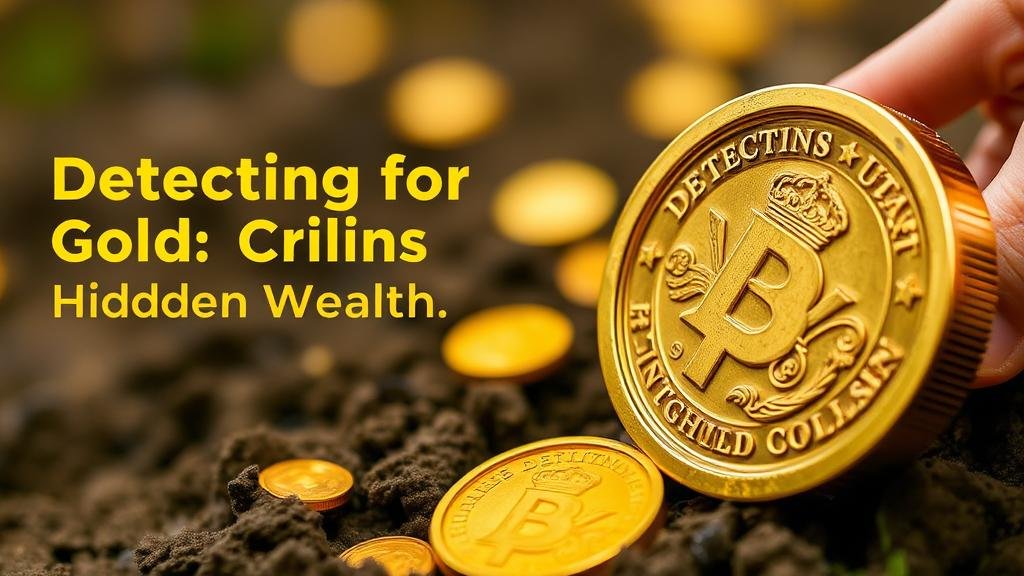Detecting for Gold Coins: Techniques for Unearthing Hidden Wealth
Detecting for Gold Coins: Techniques for Unearthing Hidden Wealth
Gold coins have fascinated treasure hunters and collectors alike for centuries, representing both historical value and financial worth. As the interest in metal detecting continues to grow, aspiring treasure hunters are keen to learn effective techniques for finding these elusive treasures. This article delves into the methodologies and practices that can enhance your prospects in detecting gold coins.
Understanding the Value of Gold Coins
Before diving into detection techniques, it’s essential to understand what sets gold coins apart. Besides their intrinsic value, which fluctuates with market trends, gold coins often carry numismatic value, determined by factors such as rarity, condition, and historical significance. For example, the 1933 Saint-Gaudens Double Eagle, a gold coin that was never circulated, recently sold for over $7 million at auction, highlighting the potential wealth hidden beneath the soil.
Essential Equipment for Gold Coin Detection
Having the right equipment can significantly improve your chances of success. Not all metal detectors are created equal, especially in terms of their capability to detect gold coins. Here are some key features to look for:
- Frequency: Higher frequency detectors (above 18 kHz) are typically better at detecting smaller gold items. This is especially important when searching for gold coins.
- Ground Balance: Seek detectors with automatic ground balancing capabilities to minimize interference from mineralized ground.
- Target Identification: Opt for devices with visual or audio discrimination, helping to differentiate between various metals.
Popular detectors such as the Garrett AT Gold and Minelab Equinox 800 have features tailored for gold detection, making them suitable choices for treasure hunters.
Site Selection: Where to Look
The right location can be as crucial as the equipment in finding gold coins. Here are some promising sites for detection:
- Historical Sites: Old battlefields, abandoned homesteads, and locations of former businesses from the Gold Rush era can yield rich finds.
- Parks and Beaches: Areas with heavy foot traffic often have lost coins; public parks or beaches can be ideal for casual hunters.
- Elevated Areas: Understanding the behavior of previous owners or communities can help point to elevated positions where people might have gathered.
A recent study indicated that over 71% of metal detecting enthusiasts have found coins in parks and beaches, emphasizing the effectiveness of these locations.
Techniques for Effective Metal Detecting
Successful metal detecting relies not only on proper gear and location but also on effective techniques. Below are some methods to maximize your results:
- Slow and Steady: Move the detector slowly and methodically. Quick movements can lead to missed targets.
- Grid Searching: Consider using a grid search pattern to ensure thorough coverage of the area. This helps avoid overlapping and missing spots.
- Adjustment and Practice: Regularly adjust the settings of your metal detector based on the conditions, and practice to become familiar with its signals.
In a case study published by the Journal of Treasure Hunting, a team that implemented grid searching in a historically rich area recovered over 300 coins, including several gold coins, within just a few days.
Post-Detection Analysis and Preservation
After successfully unearthing gold coins, the process isn’t over. Proper analysis and preservation are necessary to maintain their condition. Here are some steps to follow:
- Careful Cleaning: Use soft brushes and distilled water for cleaning; avoid harsh chemicals that can cause damage.
- Documentation: Record the find location, date, and any other relevant information. This adds to the coins provenance.
- Storage: Store coins in acid-free holders or protective capsules to prevent tarnishing and physical damage.
For example, a collector who followed best practices for preservation found that the value of their coins appreciated significantly over the years due to their well-maintained condition.
Legal Considerations for Treasure Hunters
Before embarking on a treasure hunt, it’s vital to understand the legalities. Regulations regarding metal detecting vary widely across regions:
- Permission: Always seek permission from landowners before conducting searches on private property.
- Local Laws: Familiarize yourself with local and federal laws concerning treasure hunting.
- Reporting Finds: Know if your jurisdiction requires you to report your findings, especially artifacts of historical significance.
Failure to adhere to local regulations can lead to legal issues and loss of your finds, underscoring the importance of diligence and respect for the law.
Conclusion
Detecting for gold coins is an exciting and potentially lucrative endeavor, combining skill, patience, and knowledge of historical context. By utilizing the right equipment, selecting promising locations, employing effective techniques, and respecting legal considerations, treasure hunters can enhance their chances of uncovering hidden wealth. Remember, each dig is not merely a search for gold, but a journey into the past, uncovering the stories and lives of those who once held these coins in their hands.
Whether you are a seasoned detectorist or a novice, embracing these techniques can pave your way to unearthing treasures that contribute to both personal enrichment and historical preservation.


